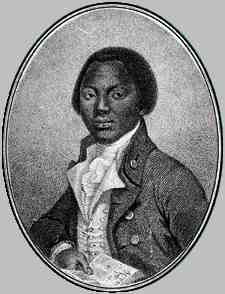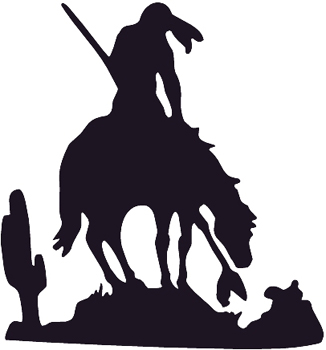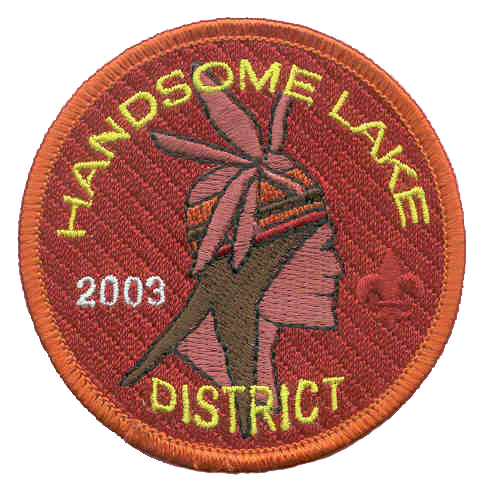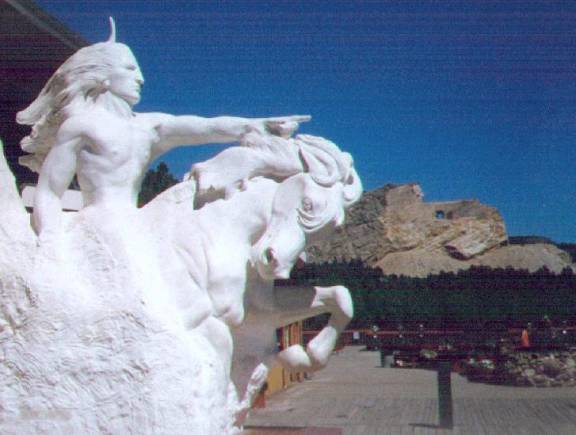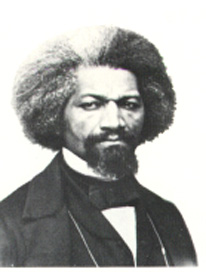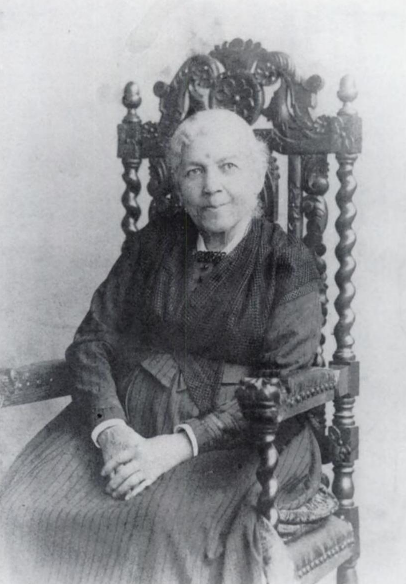|
LITR 4338
American Minority Literature
Homepage & Syllabus
coursesite URL:
http://coursesite.uhcl.edu/hsh/whitec/litr/4332/default.htm companion course: LITR 4340 American Immigrant Literature
|
|
|
Instructor: Craig White Office: Bayou 2529-8 Phone: 281 283 3380. Email: whitec@uhcl.edu Office Hours: M 1-4, 7-8; T 4-6 & by appointment
Attendance
policy:
One free cut permitted without comment or penalty;
Texts to purchase:
Louise Erdrich,
The Round House
(2012)
HarperPerennial ISBN: 0 05 097554 7 Reyna Grande, The
Distance Between Us: A Memoir (2012) Washington Square) ISBN:
978-1-4516-6178-1 Octavia Butler,
Kindred (1979) ISBN: 978-0-8070-8369-7
|
Assignments
Midterm 1 (26 February)
Midterm 2 (2 April)
Final exam (7 May)
Student Presentations
|
|
|
Reading & Presentation Schedule,
spring 2018 Course Objectives |
|
![]()
|
Monday, 22 January 2018: introductions
Poem: Chrystos, "I Have Not Signed a Treaty with the U.S. Government" Poetry reader / discussion leader: instructor
|
Agenda introduction / website syllabus presentations, assignments student information / preferences assignments origins as minority identity (not immigrant) assimilation and resistance sample poem |
![]()
|
|
American Indians as minority ( ± immigrant?) (maps) |
|
|
Monday, 29 January 2018: Origin stories & Zitkala-Sa
Poetry: Peter Blue Cloud, "The Cry" Poetry reader / discussion leader: instructor
Reading assignments: selections from Zitkala-Sa, American Indian Stories: homepage including information on Zitkala-Sa and American Indian Boarding Schools; IMPRESSIONS OF AN INDIAN CHILDHOOD; THE SCHOOL DAYS OF AN INDIAN GIRL; A DREAM OF HER GRANDFATHER
Poetry: Louise Erdrich, “Indian Boarding School: The Runaways” Poetry reader / discussion leader: Kristen Hoover
web review / outside text: Sioux Indians & The Chippewa / Ojibwa (instructor)
|
Agenda presentation assignments, next week
Course Objectives: loss & survival
immigrant / dominant culture & minority
Indian origin stories: Cynthia, Sarah
poetry: instructor
[break]
Zitkala-Sa: instructor
poetry: Kristen
midterm1
|
|
|
Discussion Questions: (centered around Primary Course Objectives) 1. Evidence of minority identity, culture, or voice (or . . . immigrant or dominant culture).
1b. How do the stories represent a distinctly American Indian story, possibly of loss and survival?
Zitkala-Sa, American Indian Stories: 1c. At what point(s) does Zitkala-Sa rewrite the Genesis Creation story to fit the Amerind story of loss and survival?
1d. Zitkala-Sa grows up in a traditional culture, then moves into a modern culture: See Modern & Traditional Cultures. How does a traditional culture appear on the reservation, a modern culture at school; and how do the two types of culture conflict, adapt, or otherwise interact with each other? As another example, contrast the manners Zitkala-Sa is taught with the manners of the white people on the train. Also compare child-rearing attitudes.
1e. How are Zitkala-Sa's experiences at school representative of problems in multicultural education? Consider tension between modern institutions and traditional family structures.
1f. Assimilation or resistance, or some hybrid or mixed identity?
2. Identification & analysis of literary purposes, devices, or genres.
Zitkala-Sa, American Indian Stories: 2b. Zitkala-Sa's early-life sketches depict an oral-spoken culture, while her experiences with missionaries and school show a written culture. How and where do these oral-spoken and written cultures appear? What different social structures do they entail—e.g., traditional or modern cultures? What strengths and limits to either? (Compare to 21st century USA and New World Order as "post-literate" society.)
3. Identification & analysis of universal human attributes?
Zitkala-Sa, American Indian Stories: 3b. What humanizes or dehumanizes characters in Zitkala-Sa's stories? |
 Zitkala-Sa (Gertrude Bonnin) 1876-1938 |
![]()
|
Monday, 5 February 2018: begin The Round House (study guide)
Poetry: Simon J. Ortiz, "A New Story"; Poetry reader / discussion leader: Kristen Hoover
web review / outside text: Turtle Mountain Reservation, North Dakota; Native American music (instructor); Apess
|
Agenda:
presentations > midterm Essay 1
poetry presentation > poem: Kristen
[break]
midterm
discussion: Justin
assignments (questions to be added to)
|
|
|
Discussion Questions: (centered around Primary Course Objectives) 1. Evidence of minority identity, culture, or voice (or . . . immigrant or dominant / "settler" culture). 1a. How much has Joe's family assimilated to the USA's dominant culture, and to what extent do they choose to remain Indian or minority?
1b. How does the rape of Joe's mother Geraldine duplicate in gendered terms the racial / ethnic minority experience? ("Afterword"). Is it appropriate to regard Geraldine's rape as a symbol or metaphor for American Indian experience of loss and survival?
1c. How to evaluate American Indians' or minorities' maintenance of spiritual or supernatural entities like ghosts or wendigo spirits?
2. Identification & analysis of literary purposes, devices, or genres. 2a. What possible distinct genres or types of story (e.g., detective, YA or coming-of-age, revenge, "dramady," others) do you recognize in the opening chapters? What do we learn about genres from the co-existence of so many genres?
2b. How does Erdrich develop and vary character to make us love, hate, or know different characters like Mom, Dad, Cappy, Father Travis?
3. Identification & analysis of universal human attributes? 3a. How much does Joe's early adolescence serve as a universal human experience? Relate to other family identities or relations?
3b. How do American Indian (or minority) cultures expand or vary the definition of family? |
 Tortoise as world-foundation in Iroquois legend |
![]()
|
Monday, 12 February 2018: continue The Round House (study guide)
Poetry:
Poetry reader / discussion leader: Christa Van Allen |
Agenda 3 primary objectives > Midterm 1 mimesis > novel mimesis > education, entertainment poetry: Christa discussion: Brad assignments, syncretism
|
|
|
Discussion Questions: (centered around Primary Course Objectives)
1. Evidence of minority identity, culture, or voice (or . . . immigrant or dominant / "settler" culture).
1a. How does the novel represent the Indian minority culture and the dominant / "settler" culture differently? How do the Indian characters see the dominant / "settler" culture, or how much do they see or interact with it at all? (Assimilation or resistance, or some hybrid or mixed identity?)
2. Identification & analysis of literary purposes, devices, or genres.
2a. Continue: What possible distinct genres or types of story (e.g., detective, YA or coming-of-age, revenge, "dramady," others) do you recognize in the opening chapters? What do we learn about genres from the co-existence of so many genres?
3. Identification & analysis of universal human attributes?
3a. What human behaviors benefit positive human relationships like friendship and supportive families?
3b. Conversely, what behaviors (however human) tend to divide people and frustrate human development?
|
 |
![]()
|
Monday, 19 February 2018: conclude The Round House (study guide)
Poetry reader / discussion leader: instructor
model assignments highlights: Katie Morin? (final exam essays on American Indian literature)
|
Agenda assignments Round House discussion loss and survival [break] midterm handouts web highlights, research proposals Models: Katie Primary objectives 1 & 2 literary devices |
|
|
Discussion Questions: (centered around Primary Course Objectives)
1. Evidence of minority identity, culture, or voice (or . . . immigrant or dominant / "settler" culture).
1a. How does the novel represent the Indian minority culture and the dominant / "settler" culture differently? How do the Indian characters see the dominant / "settler" culture, or how much do they see or interact with it at all? (Assimilation or resistance, or some hybrid or mixed identity?)
1b. Syncretism is a merging of relgious beliefs and symbols—not conversion but compromise, or acculturation rather than assimilation. What examples of syncretism in religion or acculturation in Indian lifestyles, clothing, occupations?
2. Identification & analysis of literary purposes, devices, or genres.
2a. Continue: What possible distinct genres or types of story (e.g., detective, YA or coming-of-age, revenge, "dramady," others) do you recognize in the opening chapters? What do we learn about genres from the co-existence of so many genres?
2b. The doppelganger is a familiar archetype of gothic and detective fiction and origin stories, in which good and bad twins, siblings, or strangers fight for control of identity and destiny. What serious literary or moral purposes can the doppelganger device serve. (Round House features Linda and Linden Lark, maybe Joe and Cappy; others?)
2c. Erdrich's Round House was generally well-received but received some criticism for too many digressions, and my limited criticism is that the concluding chapter feels hurried (perhaps necessarily), with a number of possible resolutions in play. Do you agree with these criticisms or see other imperfections in an otherwise impressive novel?
3. Identification & analysis of universal human attributes?
3a. What human behaviors benefit positive human relationships like friendship and supportive families?
3b. Conversely, what behaviors (however human) tend to divide people and frustrate human development?
|
 Louise Erdrich, b. 1954 |
![]()
Monday 26 February 2018: Midterm 1 (due by email to whitec@uhcl.edu by 11:59pm Thursday 1 March)
![]()
|
|
Mexican Americans as minority, immigrant, or both (maps) |
|
|
Monday, 5 March
2018:
Mexican American origins & identity Reading assignments: Story of the Virgin of Guadalupe; brief biography of Juan Seguin; Juan Nepomuceno Seguin, Personal Memoirs; Gloria Anzaldua on Borderlands / La Frontera;
Poetry: Pat Mora, "Fences" Poetry reader / discussion leader: Kara Delaughter
history and terms: Are Mexican-Americans immigrants, minorities, or both? history of Mexico; mestizo; Hispanic / Latino; New World Immigrants; Reyna Grande |
Agenda literary devices, purposes Mexican-Americans; Assignments poetry: Kara [break] discussion of Guadalupe: Christa Seguin
|
|
|
Discussion Questions:
How do Mexican Americans conform to or exceed Detailed Objective
3c.
Mexican
American narrative: a border people? La Frontera?
How do our readings today show a people pulled between competing identities?
Story of the Virgin of Guadalupe: 1. Are Mexicans European-descended or Indian-descended or both? (< mestizo)
2. Is their religion Catholic, or traditional, or both? (syncretism)
Juan Nepomuceno Seguin, Personal Memoirs: 3. How do Seguin's experiences and his internal conflicts conform to the idea of Mexican-Americans as a "border people" embodying distinct national traditions or feeling conflicting pulls from both? 3a. Is Seguin a Texan or a Mexican? An American or a Mexican? What relevance to contemporary Mexican-American identity?
4.
Note use of "adventurers"
[1,3, 4]
to describe non-Mexican peoples who "swarm" into San Antonio. How does this
change or challenge the image of early Anglo-Americans in the Southwest as "pioneers" or
"cowboys?"
|
 Juan Nepomuceno Seguin, 1806-90 |
![]()
Monday, 12 March 2018: no class meeting—Spring Break!
![]()
|
Monday, 19 March 2018: begin The Distance Between Us Reading assignments: The Distance Between Us, Book One, pp. 1-159. author's page: Reyna Grande
Poetry: Pat Mora, "Señora X No More" (Pat Mora's homepage) Poetry reader / discussion leader: Anari Oliver
history and terms: Are Mexican-Americans immigrants, minorities, or both? history of Mexico; mestizo; Hispanic / Latino; New World Immigrants; Reyna Grande |
Agenda review Midterm1 (terms index) > Midterm2 Are Mexican-Americans immigrants, minorities, or both? poetry: Anari [break] Declaration; minorities: class > race Distance discussion: Justin assignments |
|
|
Discussion Questions:
Primary Objective 1 (Minority) 1. The USA's dominant culture regards Mexican Americans primarily as immigrants, which largely describes the experience of Reyna Grande and her family in The Distance Between Us. In what ways, however, may Grande's characters also be described as minorities, or how is the Mexican immigrant experience complicated by geography and history?
1a., Pay particular attention to socioeconomic or class behaviors or values, esp. traditional / dysfunctional family.
2. In contrast to the fiction or novel Round House, The Distance Between Us is memoir or nonfiction. What differences follow in terms of characterization, narrative, perspective, and nonfiction's power to represent a minority voice and identity?
2a. Like Erdrich, Grande is also a poet. How does she enliven or unify her nonfiction with the devices of lyric poetry? 2b. Erdrich in Round House made Joe a past-future narrator, both describing Joe's actions from a present adolescent perspective and commenting on these actions from a future adult perspective. How much does Grande limit herself to a child's perspective? How much does she comment from an adult perspective? What are the effects of these different balances?
2c. As Grande grows up and encounters the modern world beyond her village, how much does her nonfiction reflect her giving up a "fairy tale world" of heroes and villains and accepting instead a more factual world in which everyone struggles against their own limits?
|
 |
![]()
|
Monday, 26 March 2018: conclude The Distance Between Us Reading assignments: The Distance Between Us, Book Two, pp. 161-322. author's page: Reyna Grande
Poetry: Jimmy Santiago Baca, "Green Chile" Poetry reader / discussion leader: Shane Murphy
model assignments highlights: instructor (final exam essays on Mexican American literature)
history and terms: Are Mexican-Americans immigrants, minorities, or both? history of Mexico; mestizo; Hispanic / Latino; New World Immigrants; Reyna Grande
|
Agenda review Mexican American literature Midterm1 > Midterm2 > model assignments poetry: Shane [break] discussion: Ambrosia literary devices?
|
|
|
Discussion Questions: Continue questions from 19 March
1. Traditional / dysfunctional family associated with minority / socioeconomic behaviors): Since nearly everyone has some sentimental feeling for traditional families, how do we discuss the fact that traditional families often limit individual achievement in modern America, which emphasizes individualism and separation from past traditions to embrace the new? (Question 1a from last week)
1a. similarly sensitive issue: "unprotected sex" and early child-bearing. Compare "Red Families v. Blue Families."
1b. Why are women more equal—at least legally or potentially—in the USA than in more traditional societies from which many immigrants and minorities arrive? Many potential answers, but what cultural attractions or risks to equality?
2. Overall, Reyna's story or career mixes minority and immigrant identities or cultural narrative: like minorities, she sometimes clings to an identity separate from the USA's dominant culture, but like immigrants she learns English, trusts authorities, excels in public education, and chooses the modern future over the traditional past, positively assimilating.
2a. How do Reyna's siblings' lives or careers compare in terms of minority or immigrant identities. How much do they negatively or positively assimilate?
2b. Back to sensitive issues, how much do the siblings' differences track class-differences as marked by wealth, education, health, geographic location, or isolation?
Literary devices (Obj. 2) 3. How does Reyna's journey transition from oral / spoken culture to a written / literate culture?
What makes us more or less human? (obj. 3) 4. What literary devices or events exceed immigrant-minority divisions to make the characters more or less human? |
 Jimmy Santiago Baca, b. 1952  |
![]()
Monday, 2 April 2018: midterm 2 (due by email to whitec@uhcl.edu by 11:59pm 3 April)
![]()
|
|
|
|
Monday, 9 April 2018: selections from Equiano, Douglass
Poetry: Phillis Wheatley, "On Being Brought from Africa to America" Poetry reader / discussion leader: Ambrosia Alderete |
Agenda midterms > final minority definitions; human; "Red Families v. Blue Families." African Americans as definitive minority poetry: Ambrosia [break] discussion: Anari assignments
|
|
|
Discussion Questions: 1. How did the authors of the slave narratives make their readers care? (Many if not most of their readers would have been whites, not slaves.)
1a. Why the emphasis on literacy? How can English / Literature / Reading teachers use this theme to educational purposes?
2. How does the existence of slavery in Africa (in Equiano) complicate Americans' attitudes toward American slavery?
3. What about the sexual component of slavery, esp. in Douglass? How do we discuss mixed-race births, and what impact do they have on racial identity?
4. If minorities lack "voice and choice," what examples from texts? How does slavery influence human speech or dialogue? What opportunities arise for cross-ethnic alliances, and what foils them?
5. How does slavery "dehumanize" both blacks and whites? How may the history of slavery reveal what is human?
|
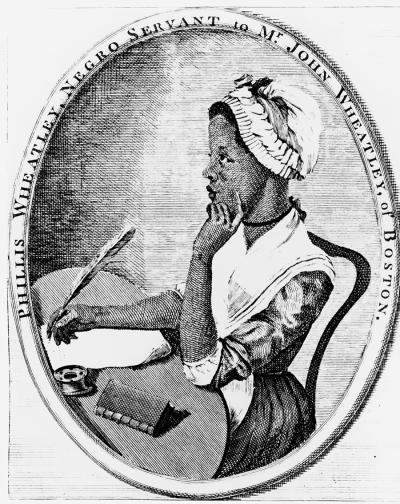 Phillis Wheatley, 1753-1784 |
![]()
|
Monday, 16 April 2018: selections from Jacobs, begin Kindred
Poetry: Maya Angelou, "Still I Rise" Poetry reader / discussion leader: Cynthia Cleveland |
Agenda final exam Jacobs: Kristin narrative > cultural narrative > dream narrative poem: Cynthia Kindred: Shane
|
|
|
Discussion Question for both texts: How does slavery "dehumanize" both blacks and whites? How may literature teach us what is human?
Discussion Questions for Incidents in the Life of a Slave Girl:
1. How surprising is the sexual component of slavery? Why isn't it acknowledged and discussed? What are the impacts of mixed-race births? Their impact on racial identity? What implications for America as a "classless society" that instead organizes itself as separate races?
2. What does Jacobs say about being not just a slave, but a woman slave? Can minority as gender be related or analogous to minority as race, ethnicity, or culture?
Objective 2a. Gender: Is the status of women, lesbians, and homosexuals analogous to that of ethnic minorities in terms of voice and choice? Do "women of color" become "double minorities?" HJ 5.4 law; 6.20 mistress;
Discussion Questions for Kindred:
1. Discuss the use of science fiction / time travel as a literary device for discussing a historical event like slavery.
2. How does understanding slavery as a foundation of American history help understand not just black America but white America? |
|
![]()
|
Monday, 23 April 2018: continue Kindred
Poetry: Countee Cullen, "Incident" & "For a Poet" (Harlem Renaissance) Poetry reader / discussion leader: Brad Cannon (Question for Cullen poems: Why is "Incident" more familiar from school anthologies and teaching than "For a Poet?" What distinct values for teaching literature generally and minority literature?
model assignments highlights: Sarah Travis (essays on African American literature in Model Assignments, most often in midterm essays, but also welcome to look at African American research projects)
|
Agenda assignments
Midterm > final
model assignments: Sara
Kindred discussion: Kara
poetry: Brad |
|
|
Discussion Questions for 23 & 30 April:
1. Discuss the use of science fiction / time travel as a literary device for discussing a historical event like slavery.
1a. How is slavery a defining historical instance of minority status? How does that minority status continue for Dana in the 20th century?
1b. Continuing the sexual dimension of slavery, how does gender identity play into or against the racial or ethnic dimensions of slavery or minority status? Compare and contrast the relations between Kevin and Weylin, Dana and Margaret, Dana and Sarah, and Dana and Rufus.
2. Most people don't like history (except as self-affirming), but how does history help us avoid fiction's tendency to divide people into heroes and villains, victims and victimizers? Or flip: how does fiction simplify history?
2a. How does fiction "personalize" slavery or make us care and see its consequences for blacks and whites? How does fiction complicate our ideas or visions about history?
2b. How does understanding slavery as a foundation of American history help understand not just black America but white America?
2c. How may "the Dream" appear in Kindred? Compare to "ethics of compromise," p. 278. (Jacobs 10.6)
3. For literary purposes or devices, how and why does Kindred introduce two leading characters who are writers, a past character (Miss Hannah) who was a reader, and Rufus as a character with a reading disorder? What are the consequences for identity from being able to read and write well?
4. For what makes us human, how is slavery dehumanizing, especially in its destruction or distortion of black and white families?
5. Watch for references to Frederick Douglass.
6. History as conditioning, deterministic; environmental influences on character, humanity—how much can we escape or redirect history? |
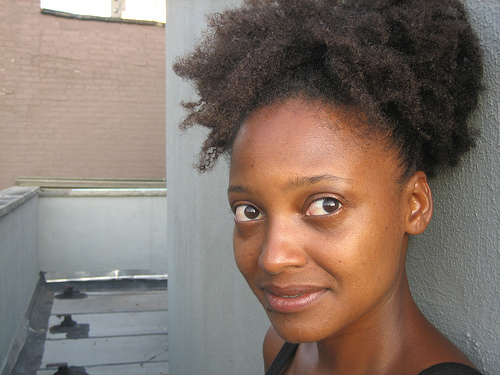 Tracy K. Smith, b. 1972 (current U.S. Poet Laureate) |
![]()
|
Monday, 30 April 2018: conclude Kindred
Poetry: Terrance Hayes, "The Blue Terrance" or Tracy K. Smith, "Don't You Wonder, Sometimes?" Poetry reader / discussion leader(s): Kristin Mizell
|
Agenda final exam Kristin: poem review Kindred & critical essay evaluations |
![]()
Monday, 7 May 2018: final exam official date (email deadline Tuesday, 8 May noon)
![]()

